What’s Your Camino Story?
Your experience on the El Camino de San Antonio Missions trail can help inspire future generations of pilgrims. Share your story and photos here.
What’s Your Camino Story?
Your experience on the El Camino de San Antonio Missions trail can help inspire future generations of pilgrims. Share your story and photos here.
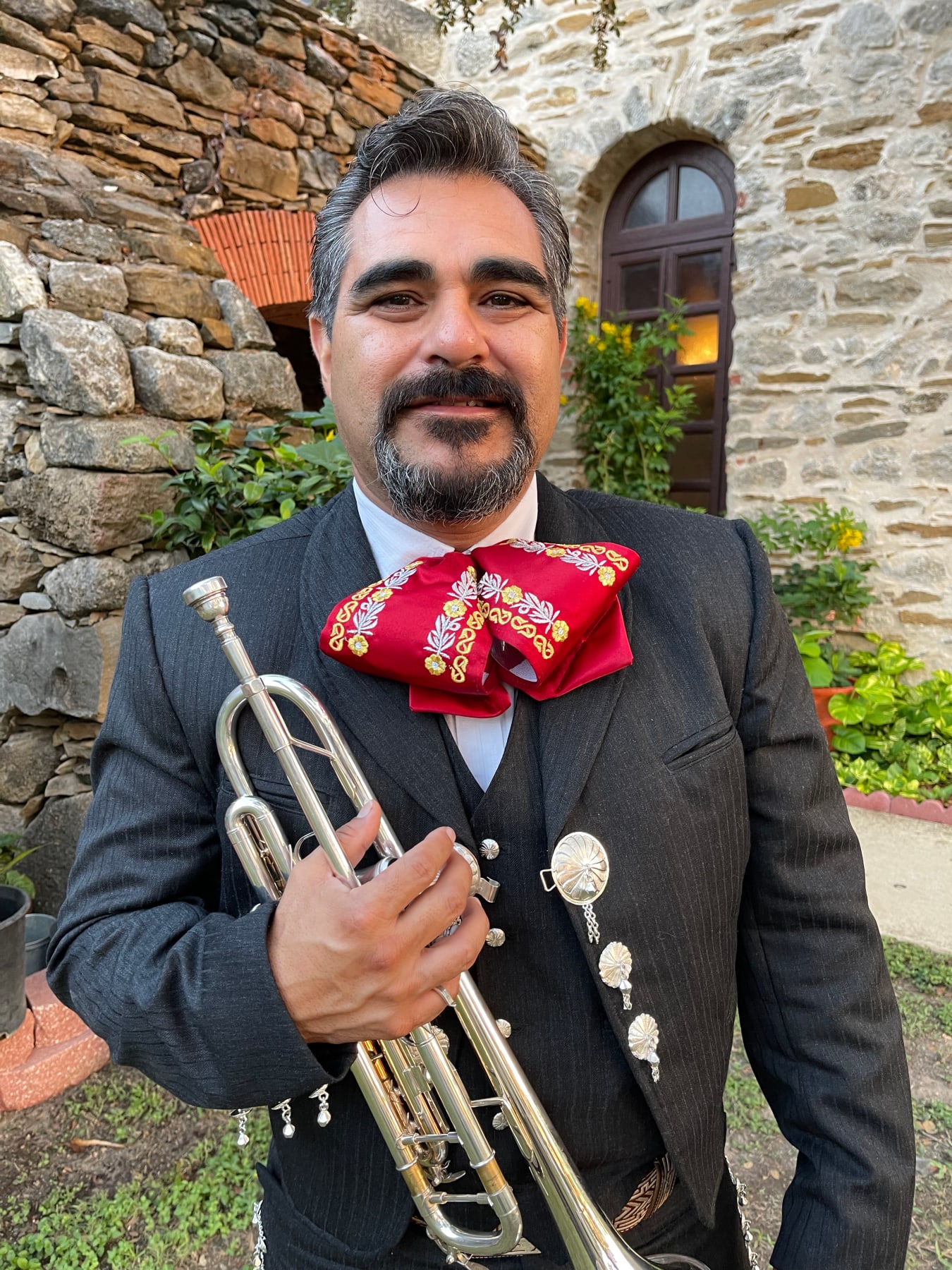
“The mariachi music and the ambience of the missions, integrates both Hispanic and indigenous cultures…”
“The mariachi music and the ambience of the missions, integrates both Hispanic and indigenous cultures. You have a culmination of the music and also religion, brought together.”
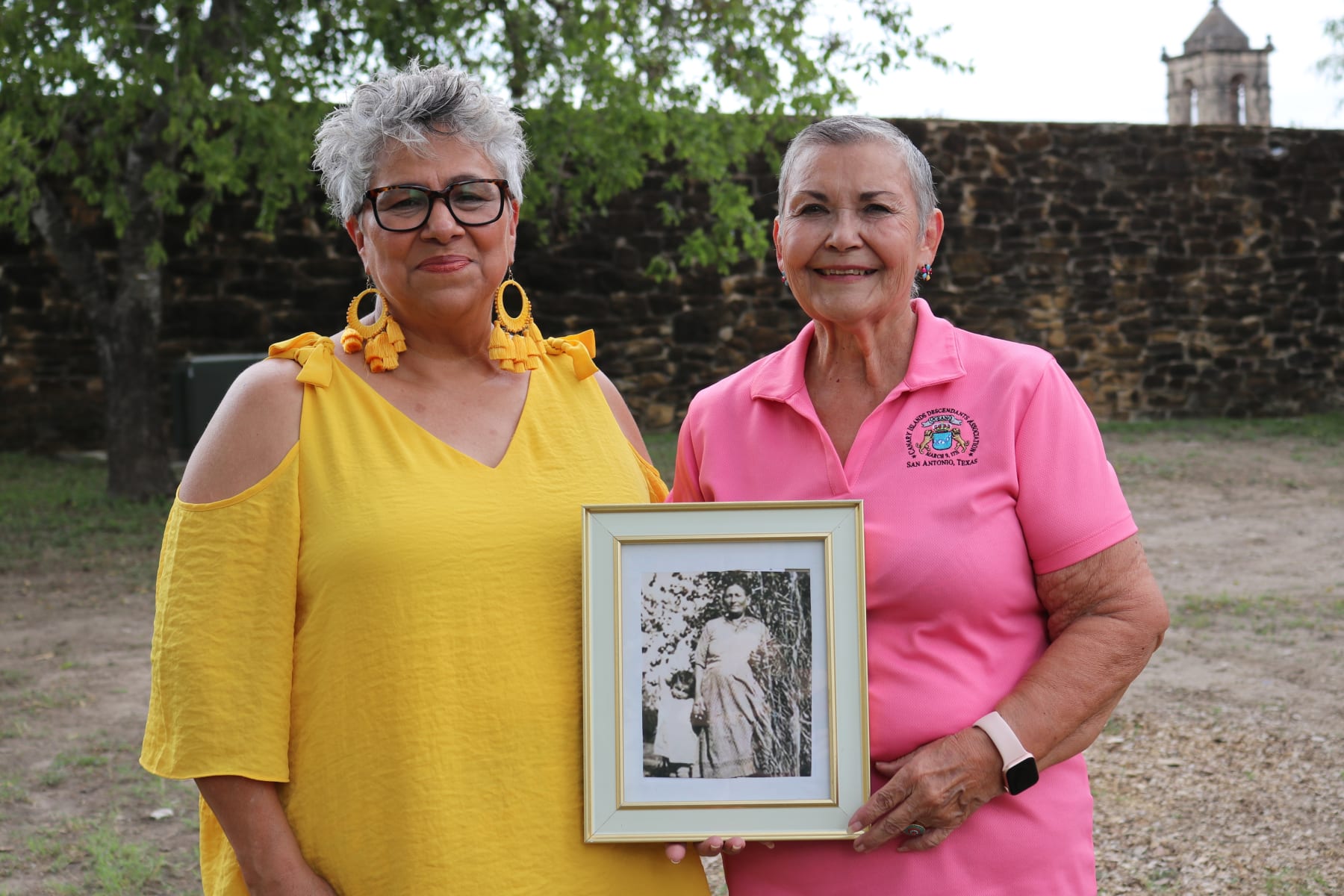
“When it came to the church and festivals and Sunday community, we were all one. One Community. One Church.”
“This is not just a community of Mexicans, Hispanics, Indigenous people and Spaniards, it was a community of Polish, German, and Czech that lived right across the street. Right across Roosevelt. I'd be a liar to say there wasn't a separation of cultures, but when it came to the church and festivals and Sunday community, we were all one. One Community. One Church.”
NPS photo

“The pilgrimage was graced with prayer and scripture.”
“The pilgrimage was graced with prayer and scripture. It was such a special tour for our family. An experience of a lifetime.”

“We have a Christ Child from a nativity set that we can trace back to probably being 300 yrs old…”
“We have a Christ Child from a nativity set that we can trace back to probably being 300 yrs old.[…] I just happened to be the caretaker for it, because it gets passed down. We do an annual Bustillo family event near Christmas where we will have the Christ Child and then we will pray. Sometimes we will do the rosary, sometimes we just have a general prayer service [...] last year we did it via Zoom, we didn’t stop.”
NPS photo
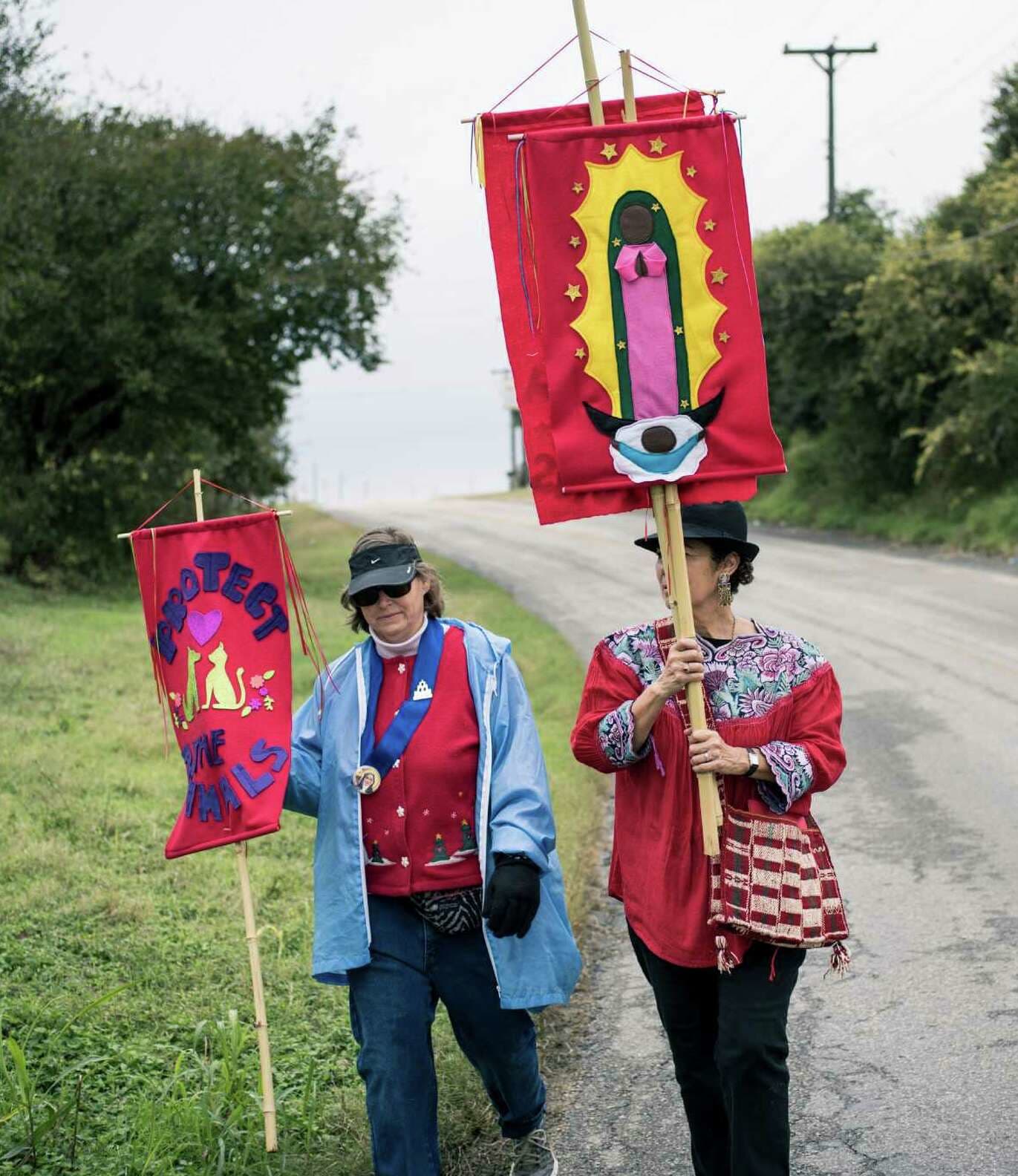
“The Virgen de Guadalupe has been a big symbol of social justice, of change, and that’s what I was hoping she’d become for us.”
“The Virgen de Guadalupe has been a big symbol of social justice, of change, and that’s what I was hoping she’d become for us.”
Matthew Busch/For The San Antonio Express-News

“La Mision was a place of belonging and always offered a purpose in which to serve that extended outside of the rock walls."
“San Francisco de la Espada was a very special place — a very special community. … In this picture, my Aunt Beatrice is shown preparing the Blessed Mother statue. This was not unusual, every Holy Day or season the statues were changed. They lovingly washed and ironed the robes that adorned the statues. They cleaned and prepared the church as often as they did their own homes. La Mision was a place of belonging and always offered a purpose in which to serve that extended outside of the rock walls.”
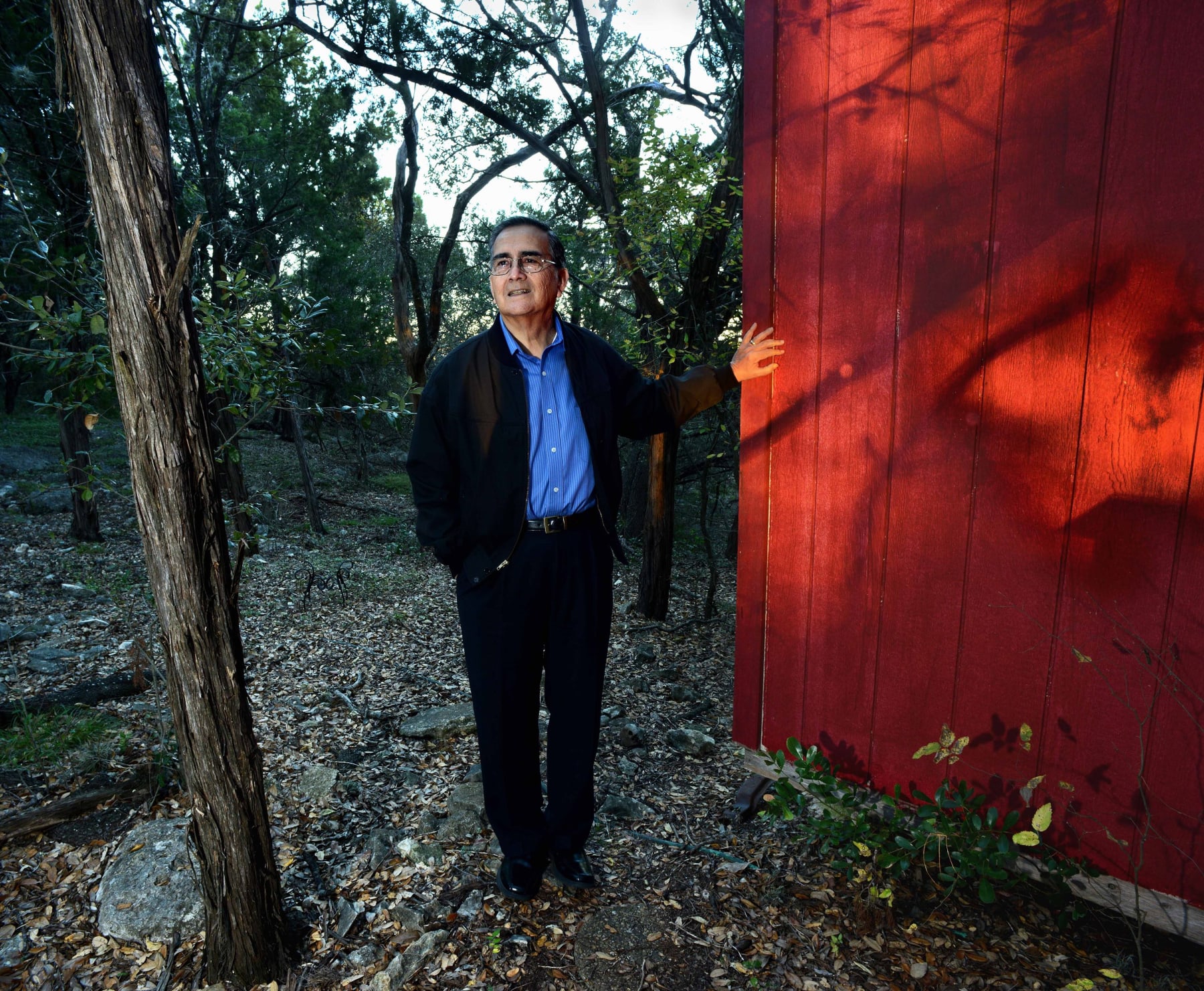
“[My ancestor] saw the raw land before the church was built. He saw the Indians that were there.”
“On March 5, 1731, the Testimonial de Possession ceremony took place. That was the ceremony of the physical taking of possession of the site of Mission Concepcion. I immediately had it translated and there was the name of a grandfather of mine, many generations back. I was proud that he had been part of that ceremony. He saw the raw land before the church was built. He saw the Indians that were there.”
Michael Nye
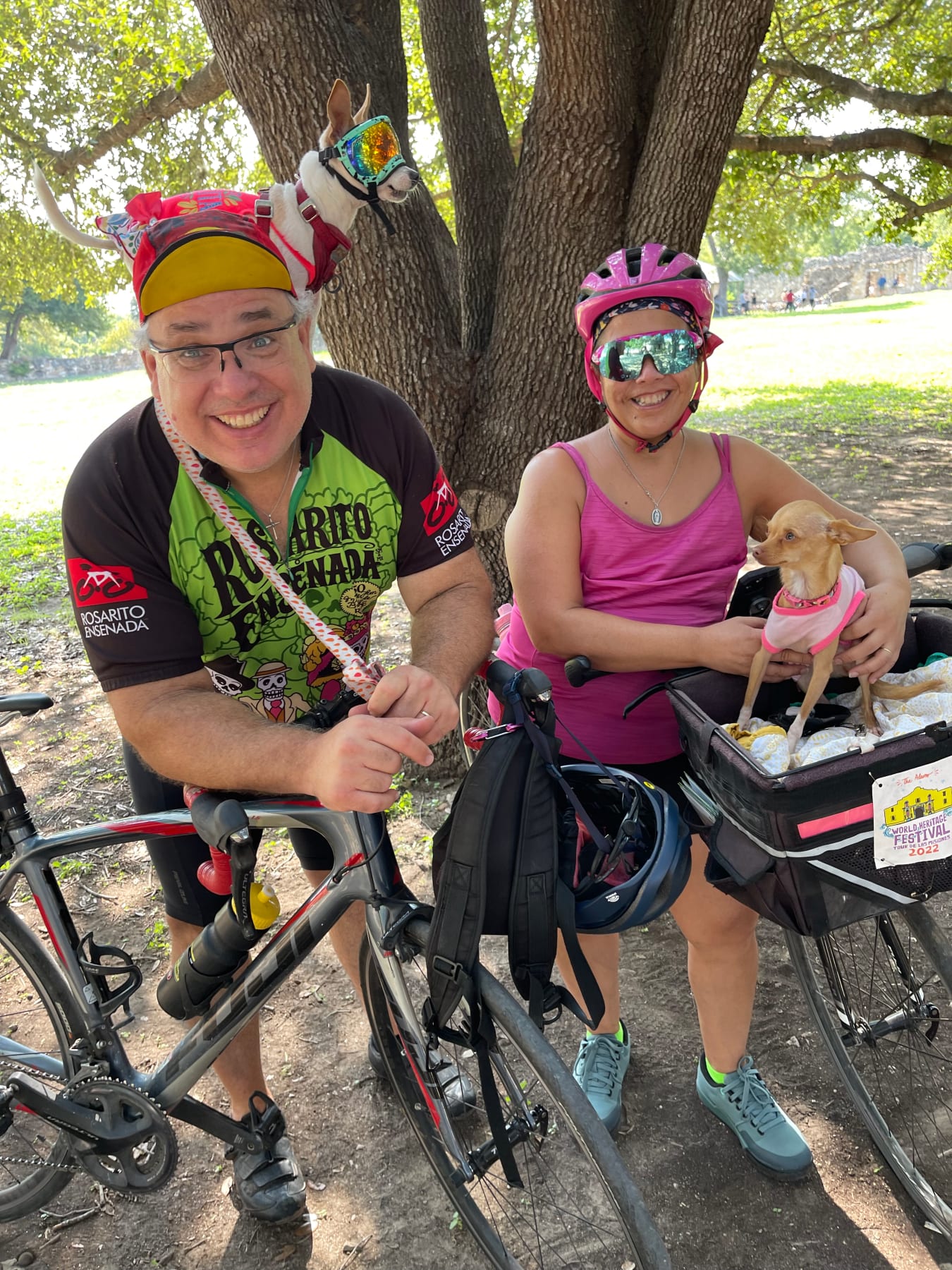
“When I was diagnosed with breast cancer I would often come to Mission San Juan. …”
“I grew up on the south side and I've known the missions forever. My husband and I do a mission bike ride almost every Sunday. When I was diagnosed with breast cancer I would often come to Mission San Juan. I love the cross inside that's right there behind our Lady of Guadalupe. I would say a rosary and just pray for myself and all women with breast cancer in our area and all over the nation.”

“As I go through Mission Concepción, I have lots of questions…”
“My great-great- grandmother was a Coahuiltecan Indian born February 23rd , 1826 at Mission Espada. She was actually raised there. As I go through Mission Concepcion, I have lots of questions. What were my ancestors thinking when they saw this beautiful church and heard the music? Can you imagine how their hearts must've been beating with anxiety? They were changing so much of their culture and their spirituality of nature, the sun, the moon, the waters, the calmness of the waters.”
Michael Nye

“Our experience turned out to be so much richer than we expected and quite humbling.”
“Our experience turned out to be so much richer than we expected and quite humbling. As we walked the grounds, visited each church, and learned more about the history of each site, we were moved by the faith, perseverance, and cooperation among all the residents of the missions, and we were particularly aware that we were praying in sacred places where others had worshipped for centuries and continue to do so to this day.”

“There seemed to always be something going on; sacrament celebrations, festivals, school events, neighborhood gatherings.”
“This photo is of the wedding of my parents, Jose and Teresa (Tita) Rodriguez. They married at Mission Espada on January 31, 1948. From the day they married until they both passed, for my parents, it seemed that life revolved around La Misión. My mother and her sister attended Mission Espada School, as did my sister and I. There seemed to always be something going on; sacrament celebrations, festivals, school events, neighborhood gatherings.”

“Reaching our missions and connecting our faith deeper one step at a time.”
“My pilgrimage with my sister and church friends walking together with Mother Mary bringing our personal intentions, praying as one along the way. Sharing our stories in life, learning more of each other, finding Christ together is aways there for us. When we think back, we weren't alone. Reaching our missions and connecting our faith deeper one step at a time. … I have seen the church so many times before but, on that day, reaching my final destination at the church, in my eyes it was so heartwarming to finish strong in more than just physical ways.”
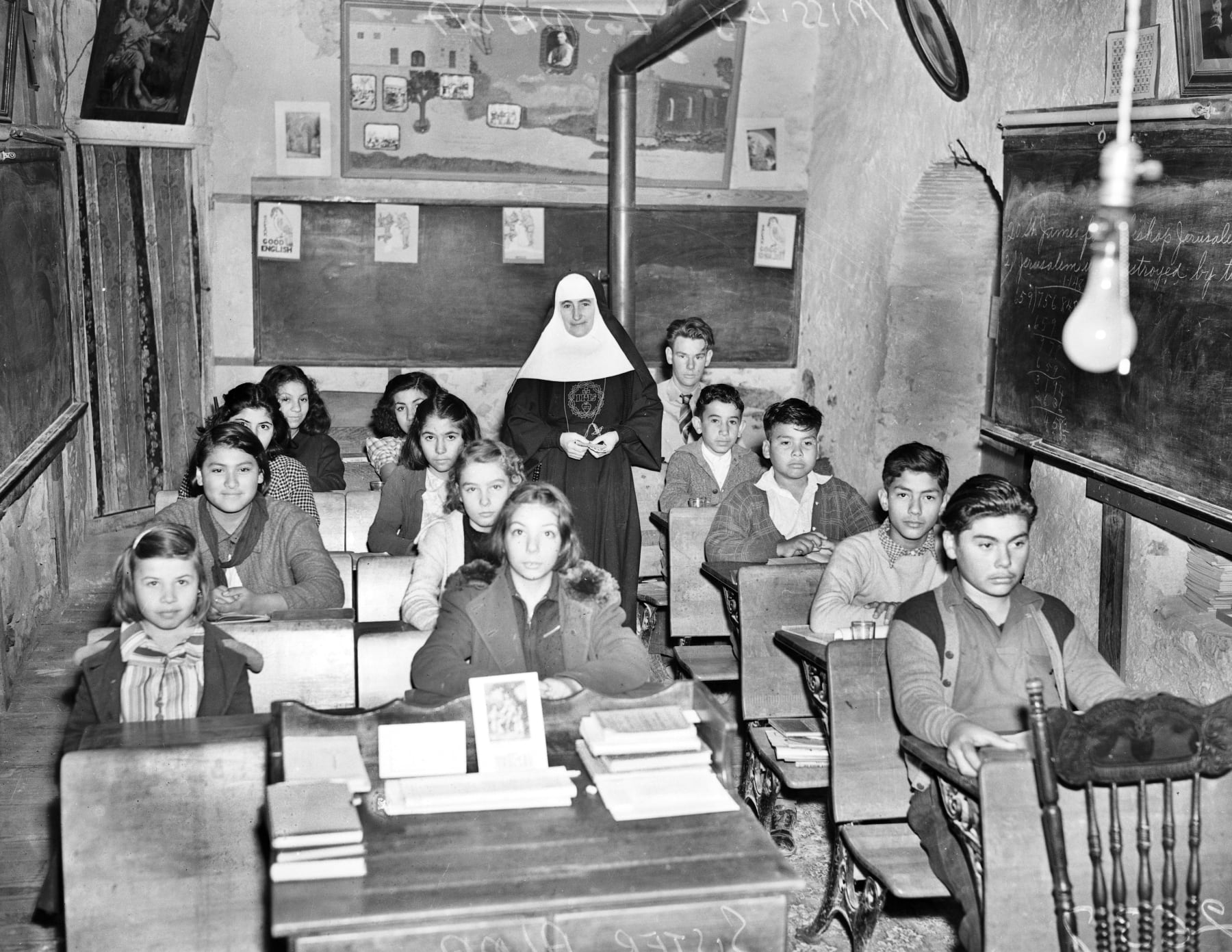
“There were three classrooms consisting of three grade levels each and all our teachers were nuns.”
“I am the first girl in the left row. I was twelve or thirteen when that picture was taken. I graduated from Mission Espada in 1944. My brother, Edward, pictured in the right row, 4th from the front graduated from Mission Espada school in 1942. I was anxious to go to school. My father, Raphael Guerra, talked with the principal, Mother Pauline. She let me start at age five instead of six. She also taught my father at Mission Espada school. The school had grades premier to 8th grade. There were three classrooms consisting of three grade levels each and all our teachers were nuns. There were no lay teachers.”
Institute of Texan Cultures, The University of Texas at San Antonio

“We found peace, we found love and most importantly we found God…”
“We had done this prior to attending church, we found peace, we found love and most importantly we found God. We knew this was our place, our home and where we knew we would promise God forever. Him and Us. We got married at Mission Concepción and we Baptized our baby at Mission Concepción.”
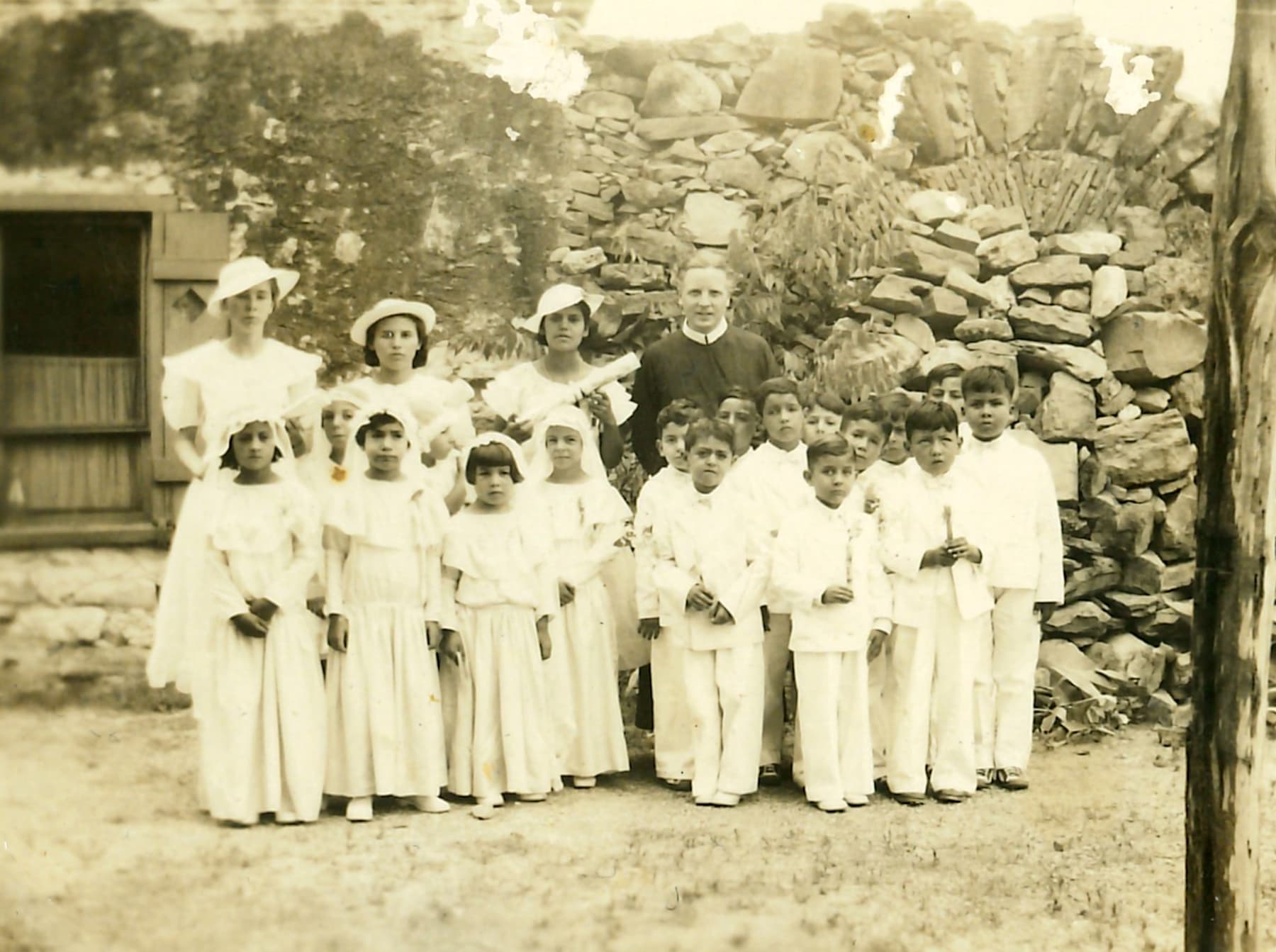
“In the first grade, when we made our first Holy Communion…”
“When starting school several of us did not speak English, but by first grade we did. We had to learn quickly to keep up. Classes were taught in English and we did not wear uniforms. We wore whatever we had. We went to school at Mission Espada and went to church at Mission San Juan. We walked to both church and school. In the first grade, when we made our first Holy Communion, the nuns made every girl a long, white taffeta dress and veil.”

“Procession with the seminarian Rafael Becerra and the community of OLPH.”
“Procession with the seminarian Rafael Becerra and the community of OLPH.”
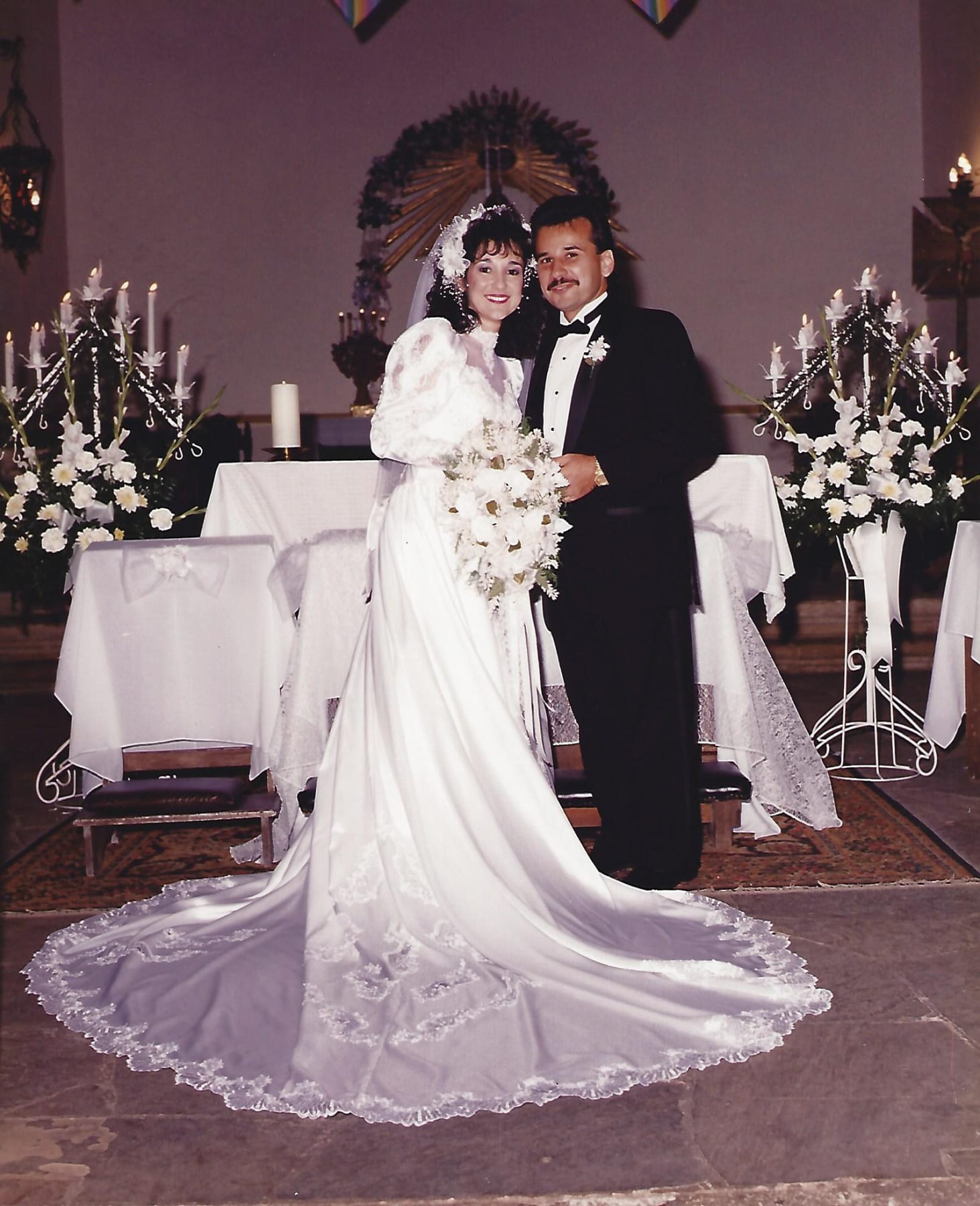
“The Spirit is definitely alive here!”
“I was hired as a Youth Minister/Music coordinator for Mission Concepcion in 1977. I met my wife Rosemary and married her here in October 1989. In 2004 I celebrated my first Mass as a Permanent Deacon for the Archdiocese of San Antonio. Here I have been able to celebrate special moments that mark our lives spiritually. I have been supported and blessed by priests, religious and families, some of whom have been a part of this community for generations. Very few places offer the hospitality and welcome that the parishioners of Mission Concepcion offer. The Spirit is definitely alive here!”

“Linking the Camino de Santiago to San Antonio is brilliant because of the history and beauty shared between both places…”
“As soon as I heard about the Pilgrimage in San Antonio, I had to go! One highlight was Mass at Mission Espada, the singing and acoustics produced some of the finest sounds I've ever heard! When I returned home, I booked my flight to A Coruña. Linking the Camino de Santiago to San Antonio is brilliant because of the history and beauty shared between both places. I love how my distance certificate says I started in San Antonio! My Camino San Antonio to Camino Ingles Pilgrimage was a huge success. My own personal relationship with the Church has also been greatly impacted.”

“The mariachi music and the ambience of the missions, integrates both Hispanic and indigenous cultures…”
“The mariachi music and the ambience of the missions, integrates both Hispanic and indigenous cultures. You have a culmination of the music and also religion, brought together.”

“When it came to the church and festivals and Sunday community, we were all one. One Community. One Church.”
“This is not just a community of Mexicans, Hispanics, Indigenous people and Spaniards, it was a community of Polish, German, and Czech that lived right across the street. Right across Roosevelt. I'd be a liar to say there wasn't a separation of cultures, but when it came to the church and festivals and Sunday community, we were all one. One Community. One Church.”
NPS photo

“The pilgrimage was graced with prayer and scripture.”
“The pilgrimage was graced with prayer and scripture. It was such a special tour for our family. An experience of a lifetime.”

“We have a Christ Child from a nativity set that we can trace back to probably being 300 yrs old…”
“We have a Christ Child from a nativity set that we can trace back to probably being 300 yrs old.[…] I just happened to be the caretaker for it, because it gets passed down. We do an annual Bustillo family event near Christmas where we will have the Christ Child and then we will pray. Sometimes we will do the rosary, sometimes we just have a general prayer service [...] last year we did it via Zoom, we didn’t stop.”
NPS photo

“The Virgen de Guadalupe has been a big symbol of social justice, of change, and that’s what I was hoping she’d become for us.”
“The Virgen de Guadalupe has been a big symbol of social justice, of change, and that’s what I was hoping she’d become for us.”
Matthew Busch/For The San Antonio Express-News

“La Mision was a place of belonging and always offered a purpose in which to serve that extended outside of the rock walls."
“San Francisco de la Espada was a very special place — a very special community. … In this picture, my Aunt Beatrice is shown preparing the Blessed Mother statue. This was not unusual, every Holy Day or season the statues were changed. They lovingly washed and ironed the robes that adorned the statues. They cleaned and prepared the church as often as they did their own homes. La Mision was a place of belonging and always offered a purpose in which to serve that extended outside of the rock walls.”

“[My ancestor] saw the raw land before the church was built. He saw the Indians that were there.”
“On March 5, 1731, the Testimonial de Possession ceremony took place. That was the ceremony of the physical taking of possession of the site of Mission Concepcion. I immediately had it translated and there was the name of a grandfather of mine, many generations back. I was proud that he had been part of that ceremony. He saw the raw land before the church was built. He saw the Indians that were there.”
Michael Nye

“When I was diagnosed with breast cancer I would often come to Mission San Juan. …”
“I grew up on the south side and I've known the missions forever. My husband and I do a mission bike ride almost every Sunday. When I was diagnosed with breast cancer I would often come to Mission San Juan. I love the cross inside that's right there behind our Lady of Guadalupe. I would say a rosary and just pray for myself and all women with breast cancer in our area and all over the nation.”

“As I go through Mission Concepción, I have lots of questions…”
“My great-great- grandmother was a Coahuiltecan Indian born February 23rd , 1826 at Mission Espada. She was actually raised there. As I go through Mission Concepcion, I have lots of questions. What were my ancestors thinking when they saw this beautiful church and heard the music? Can you imagine how their hearts must've been beating with anxiety? They were changing so much of their culture and their spirituality of nature, the sun, the moon, the waters, the calmness of the waters.”
Michael Nye

“Our experience turned out to be so much richer than we expected and quite humbling.”
“Our experience turned out to be so much richer than we expected and quite humbling. As we walked the grounds, visited each church, and learned more about the history of each site, we were moved by the faith, perseverance, and cooperation among all the residents of the missions, and we were particularly aware that we were praying in sacred places where others had worshipped for centuries and continue to do so to this day.”

“There seemed to always be something going on; sacrament celebrations, festivals, school events, neighborhood gatherings.”
“This photo is of the wedding of my parents, Jose and Teresa (Tita) Rodriguez. They married at Mission Espada on January 31, 1948. From the day they married until they both passed, for my parents, it seemed that life revolved around La Misión. My mother and her sister attended Mission Espada School, as did my sister and I. There seemed to always be something going on; sacrament celebrations, festivals, school events, neighborhood gatherings.”

“Reaching our missions and connecting our faith deeper one step at a time.”
“My pilgrimage with my sister and church friends walking together with Mother Mary bringing our personal intentions, praying as one along the way. Sharing our stories in life, learning more of each other, finding Christ together is aways there for us. When we think back, we weren't alone. Reaching our missions and connecting our faith deeper one step at a time. … I have seen the church so many times before but, on that day, reaching my final destination at the church, in my eyes it was so heartwarming to finish strong in more than just physical ways.”

“There were three classrooms consisting of three grade levels each and all our teachers were nuns.”
“I am the first girl in the left row. I was twelve or thirteen when that picture was taken. I graduated from Mission Espada in 1944. My brother, Edward, pictured in the right row, 4th from the front graduated from Mission Espada school in 1942. I was anxious to go to school. My father, Raphael Guerra, talked with the principal, Mother Pauline. She let me start at age five instead of six. She also taught my father at Mission Espada school. The school had grades premier to 8th grade. There were three classrooms consisting of three grade levels each and all our teachers were nuns. There were no lay teachers.”
Institute of Texan Cultures, The University of Texas at San Antonio

“We found peace, we found love and most importantly we found God…”
“We had done this prior to attending church, we found peace, we found love and most importantly we found God. We knew this was our place, our home and where we knew we would promise God forever. Him and Us. We got married at Mission Concepción and we Baptized our baby at Mission Concepción.”

“In the first grade, when we made our first Holy Communion…”
“When starting school several of us did not speak English, but by first grade we did. We had to learn quickly to keep up. Classes were taught in English and we did not wear uniforms. We wore whatever we had. We went to school at Mission Espada and went to church at Mission San Juan. We walked to both church and school. In the first grade, when we made our first Holy Communion, the nuns made every girl a long, white taffeta dress and veil.”

“Procession with the seminarian Rafael Becerra and the community of OLPH.”
“Procession with the seminarian Rafael Becerra and the community of OLPH.”

“The Spirit is definitely alive here!”
“I was hired as a Youth Minister/Music coordinator for Mission Concepcion in 1977. I met my wife Rosemary and married her here in October 1989. In 2004 I celebrated my first Mass as a Permanent Deacon for the Archdiocese of San Antonio. Here I have been able to celebrate special moments that mark our lives spiritually. I have been supported and blessed by priests, religious and families, some of whom have been a part of this community for generations. Very few places offer the hospitality and welcome that the parishioners of Mission Concepcion offer. The Spirit is definitely alive here!”

“Linking the Camino de Santiago to San Antonio is brilliant because of the history and beauty shared between both places…”
“As soon as I heard about the Pilgrimage in San Antonio, I had to go! One highlight was Mass at Mission Espada, the singing and acoustics produced some of the finest sounds I've ever heard! When I returned home, I booked my flight to A Coruña. Linking the Camino de Santiago to San Antonio is brilliant because of the history and beauty shared between both places. I love how my distance certificate says I started in San Antonio! My Camino San Antonio to Camino Ingles Pilgrimage was a huge success. My own personal relationship with the Church has also been greatly impacted.”

“The mariachi music and the ambience of the missions, integrates both Hispanic and indigenous cultures…”
“The mariachi music and the ambience of the missions, integrates both Hispanic and indigenous cultures. You have a culmination of the music and also religion, brought together.”

“When it came to the church and festivals and Sunday community, we were all one. One Community. One Church.”
“This is not just a community of Mexicans, Hispanics, Indigenous people and Spaniards, it was a community of Polish, German, and Czech that lived right across the street. Right across Roosevelt. I'd be a liar to say there wasn't a separation of cultures, but when it came to the church and festivals and Sunday community, we were all one. One Community. One Church.”
NPS photo

“The pilgrimage was graced with prayer and scripture.”
“The pilgrimage was graced with prayer and scripture. It was such a special tour for our family. An experience of a lifetime.”

“We have a Christ Child from a nativity set that we can trace back to probably being 300 yrs old…”
“We have a Christ Child from a nativity set that we can trace back to probably being 300 yrs old.[…] I just happened to be the caretaker for it, because it gets passed down. We do an annual Bustillo family event near Christmas where we will have the Christ Child and then we will pray. Sometimes we will do the rosary, sometimes we just have a general prayer service [...] last year we did it via Zoom, we didn’t stop.”
NPS photo

“The Virgen de Guadalupe has been a big symbol of social justice, of change, and that’s what I was hoping she’d become for us.”
“The Virgen de Guadalupe has been a big symbol of social justice, of change, and that’s what I was hoping she’d become for us.”
Matthew Busch/For The San Antonio Express-News

“La Mision was a place of belonging and always offered a purpose in which to serve that extended outside of the rock walls."
“San Francisco de la Espada was a very special place — a very special community. … In this picture, my Aunt Beatrice is shown preparing the Blessed Mother statue. This was not unusual, every Holy Day or season the statues were changed. They lovingly washed and ironed the robes that adorned the statues. They cleaned and prepared the church as often as they did their own homes. La Mision was a place of belonging and always offered a purpose in which to serve that extended outside of the rock walls.”

“[My ancestor] saw the raw land before the church was built. He saw the Indians that were there.”
“On March 5, 1731, the Testimonial de Possession ceremony took place. That was the ceremony of the physical taking of possession of the site of Mission Concepcion. I immediately had it translated and there was the name of a grandfather of mine, many generations back. I was proud that he had been part of that ceremony. He saw the raw land before the church was built. He saw the Indians that were there.”
Michael Nye

“When I was diagnosed with breast cancer I would often come to Mission San Juan. …”
“I grew up on the south side and I've known the missions forever. My husband and I do a mission bike ride almost every Sunday. When I was diagnosed with breast cancer I would often come to Mission San Juan. I love the cross inside that's right there behind our Lady of Guadalupe. I would say a rosary and just pray for myself and all women with breast cancer in our area and all over the nation.”

“As I go through Mission Concepción, I have lots of questions…”
“My great-great- grandmother was a Coahuiltecan Indian born February 23rd , 1826 at Mission Espada. She was actually raised there. As I go through Mission Concepcion, I have lots of questions. What were my ancestors thinking when they saw this beautiful church and heard the music? Can you imagine how their hearts must've been beating with anxiety? They were changing so much of their culture and their spirituality of nature, the sun, the moon, the waters, the calmness of the waters.”
Michael Nye

“Our experience turned out to be so much richer than we expected and quite humbling.”
“Our experience turned out to be so much richer than we expected and quite humbling. As we walked the grounds, visited each church, and learned more about the history of each site, we were moved by the faith, perseverance, and cooperation among all the residents of the missions, and we were particularly aware that we were praying in sacred places where others had worshipped for centuries and continue to do so to this day.”

“There seemed to always be something going on; sacrament celebrations, festivals, school events, neighborhood gatherings.”
“This photo is of the wedding of my parents, Jose and Teresa (Tita) Rodriguez. They married at Mission Espada on January 31, 1948. From the day they married until they both passed, for my parents, it seemed that life revolved around La Misión. My mother and her sister attended Mission Espada School, as did my sister and I. There seemed to always be something going on; sacrament celebrations, festivals, school events, neighborhood gatherings.”

“Reaching our missions and connecting our faith deeper one step at a time.”
“My pilgrimage with my sister and church friends walking together with Mother Mary bringing our personal intentions, praying as one along the way. Sharing our stories in life, learning more of each other, finding Christ together is aways there for us. When we think back, we weren't alone. Reaching our missions and connecting our faith deeper one step at a time. … I have seen the church so many times before but, on that day, reaching my final destination at the church, in my eyes it was so heartwarming to finish strong in more than just physical ways.”

“There were three classrooms consisting of three grade levels each and all our teachers were nuns.”
“I am the first girl in the left row. I was twelve or thirteen when that picture was taken. I graduated from Mission Espada in 1944. My brother, Edward, pictured in the right row, 4th from the front graduated from Mission Espada school in 1942. I was anxious to go to school. My father, Raphael Guerra, talked with the principal, Mother Pauline. She let me start at age five instead of six. She also taught my father at Mission Espada school. The school had grades premier to 8th grade. There were three classrooms consisting of three grade levels each and all our teachers were nuns. There were no lay teachers.”
Institute of Texan Cultures, The University of Texas at San Antonio

“We found peace, we found love and most importantly we found God…”
“We had done this prior to attending church, we found peace, we found love and most importantly we found God. We knew this was our place, our home and where we knew we would promise God forever. Him and Us. We got married at Mission Concepción and we Baptized our baby at Mission Concepción.”

“In the first grade, when we made our first Holy Communion…”
“When starting school several of us did not speak English, but by first grade we did. We had to learn quickly to keep up. Classes were taught in English and we did not wear uniforms. We wore whatever we had. We went to school at Mission Espada and went to church at Mission San Juan. We walked to both church and school. In the first grade, when we made our first Holy Communion, the nuns made every girl a long, white taffeta dress and veil.”

“Procession with the seminarian Rafael Becerra and the community of OLPH.”
“Procession with the seminarian Rafael Becerra and the community of OLPH.”

“The Spirit is definitely alive here!”
“I was hired as a Youth Minister/Music coordinator for Mission Concepcion in 1977. I met my wife Rosemary and married her here in October 1989. In 2004 I celebrated my first Mass as a Permanent Deacon for the Archdiocese of San Antonio. Here I have been able to celebrate special moments that mark our lives spiritually. I have been supported and blessed by priests, religious and families, some of whom have been a part of this community for generations. Very few places offer the hospitality and welcome that the parishioners of Mission Concepcion offer. The Spirit is definitely alive here!”

“Linking the Camino de Santiago to San Antonio is brilliant because of the history and beauty shared between both places…”
“As soon as I heard about the Pilgrimage in San Antonio, I had to go! One highlight was Mass at Mission Espada, the singing and acoustics produced some of the finest sounds I've ever heard! When I returned home, I booked my flight to A Coruña. Linking the Camino de Santiago to San Antonio is brilliant because of the history and beauty shared between both places. I love how my distance certificate says I started in San Antonio! My Camino San Antonio to Camino Ingles Pilgrimage was a huge success. My own personal relationship with the Church has also been greatly impacted.”